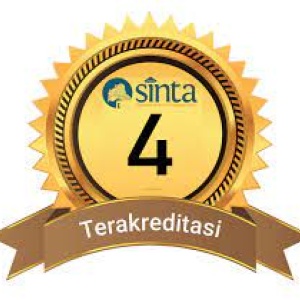Menjadi Bodoh Karena Terlalu Pintar: Kritik dan Mistisisme dalam Kidung Cowak
DOI:
https://doi.org/10.37014/jumantara.v15i1.4880Keywords:
Kidung Cowak, Criticism, Mysticism, Critical Hermeneutics, ManuscriptsAbstract
“Being stupid for being too smart” is the opening verse written in Kidung Cowak. A statement with a satirical and sarcastic tone displays an unceremonious irony, delivered by the author as the opening line of his work. This is something that is not commonly found in a work of Kawi literature because almost half of the content is criticism. The author of Kidung Cowak is, by consensus, estimated to be associated with the name of Ida Padanda Sakti Talaga, who is one of Dang Hyang Nirartha’s children. Satire and sarcasm are attempts by the author to emphasize the core of his criticism. Not only does it contain criticism, but the other half of Kidung Cowak also contains various symbols about mystical and esoteric teachings that are still closely related to his criticism delivered in an euphemistic style. In addition to presenting a transcription of Kidung Cowak, this article also provides an in-depth analysis and interpretation of the text using Jürgen Habermas’s critical hermeneutics.References
Baried, Siti Baroroh. Pengantar Teori Filologi. Yogyakarta: Universitas Gadjah Mada. 1994.
Foresman, Galen.A, Peter S.Fosl, and Jamie C. Watson. The Critical Thinking Toolkit. United Kingdom: John Wiley & Sons Ltd. 2017.
Habermas, Jurgen. Ruang Publik Sebuah Kajian Tentang Kategori Masyarakat Borjuis. Yogyakarta: Kreasi Wacana. 2007.
Hardiman, F. Budi. Seni Memahami Hermeneutik Dari Schleiermacher Sampai Derrida. Sleman: PT Kanisius. 2015.
Kleden, Ignas. Sastra Indonesia Dalam Enam Pertanyaan Esai-esai Sastra dan Budaya. Jakarta: Freedom Institute. 2004.
Marie, Bambang Khusen Al. Serat Wicara Keras Karya R. Ngabei Yasadipura II. -. tt.
Nurhadi. 2005. Batas Antara Fakta dan Fiksi Dalam Tema Religiusitas. Jurnal Penelitian Agama. v.-, n.35, p.-.
Palguna, IBM. Dharma. Budaya Kepintaran Sampai Budaya Kekerasan Pikiran. Mataram: Sadampatyaksara. 2007.
Palguna, IBM Dharma. Shastra Wangsa Kamus Istilah Wangsa Bali. Denpasar: Japa Widya Duta. 2018.
Poerbatjaraka, R.M.Ng & Tardjan Hadidjaja. Kepustakaan Djawa. Jakarta: Djambatan. 1957.
Putra, Ida Bagus Rai. Sejarah Bali Madya (Pertengahan) dan Wacana Pabalik Kryan Agung Maruti Dimade Terhadap Kraton Swechapura (Gelgel). Prodi Sastra Bali FSB Universitas Udayana. 2014.
Reps. Paul & Nyogen Senzaki. Zen Flesh Zen Bone. Tokyo: Tuttle Publishing. 1985.
Robson, S.O. Prinsip-prinsip Filologi Indonesia. Jakarta: Perpustakaan Nasional. 1994.
Rubinstein, Raechelle. Beyond The Realm of The Sense The Balinese Ritual of Kekawin Composition. Leiden: KITLV Press. 2000.
Sastrodiwiryo, Soegianto. Perjalanan Danghyang Nirartha, Sebuah Dharmayatra (1478-1560) Dari Daha Sampai Tambora. Denpasar: PT.BP. 2010.
Schomerus, H.W. Saiva Siddhanta An Indian School of Mystical Thought. Delhi: Motilal Banarsidass Publishers Privat Limited. 1979.
Smith, Margaret. Studies In Early Mysticism In The Near and Middle East. England: Oneworld Publication Oxford. 1995.
Sugriwa, IGB. Dwijendra Tatwa. Denpasar: Upada Sastra. 1991.
Thompson, John B.. Critical Hermeneutics: A Study in the Thought of Paul Rcoeur and Jurgen Habermas. New York: Cambridge University Press. 2003.
Zoetmulder, P.J. Kalangwan Sastra Jawa Kuno Selayang Pandang. Jakarta: Djambatan. 1983.
Zoetmulder, P.J. Manunggaling Kawula Gusti Pantheisme dan Monisme Dalam Sastra Suluk Jawa. Jakarta: Gramedia Pustaka Utama. 2000.
Referensi Naskah Lontar
Babad Pedanda Sidemen. Naskah Alih Aksara. Koleksi Gedong Kirtya Singaraja Nomor 6336/Va.
Babad Brahmana Siwa. Naskah Alih Aksara. Koleksi Gedong Kirtya Singaraja Nomor 1109/9/Va.
Babad Sang Brahmana Catur. Naskah Alih Aksara. Koleksi Gedong Kirtya Singaraja Nomor 273/4/Va.
Dwijendra Tatwa. Naskah Lontar Beraksara Bali. Koleksi Dinas Kebudayaan Provinsi Bali Nomor T/VII/9/DOKBUD.
Kidung Cowak. Naskah Lontar Beraksara Bali. Koleksi Pribadi.
Downloads
Published
Issue
Section
License
Copyright (c) 2024 Budi Santosa

This work is licensed under a Creative Commons Attribution-ShareAlike 4.0 International License.
- This statement is the author's commitment to respect copyright, both in terms of citing other people's work and utilizing journal content. If necessary, the author can send an Authenticity Statement of Article stating that "this work is the author's original idea and has never been sent to another publisher and published in any publication"
- The author retains copyright.
- The moral rights of publication belong to the author.
- Formal legal aspects in the use of journal publications refer to the Creative Commons Attribution-ShareAlike 4.0 (CC BY-SA) license, which means that journal content can be used freely for any purpose.









